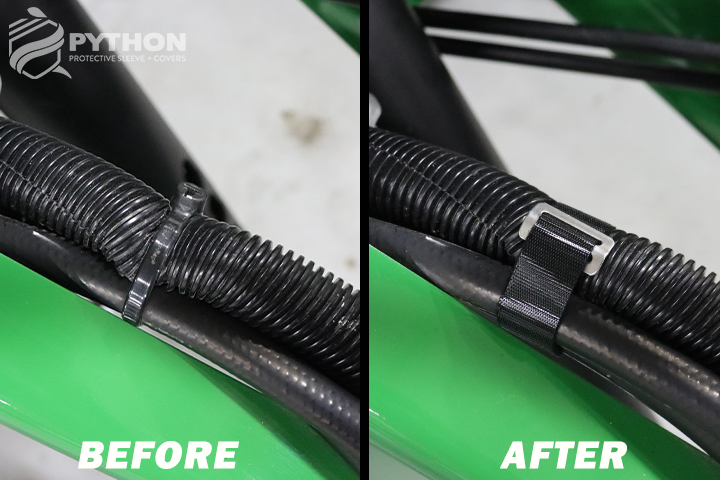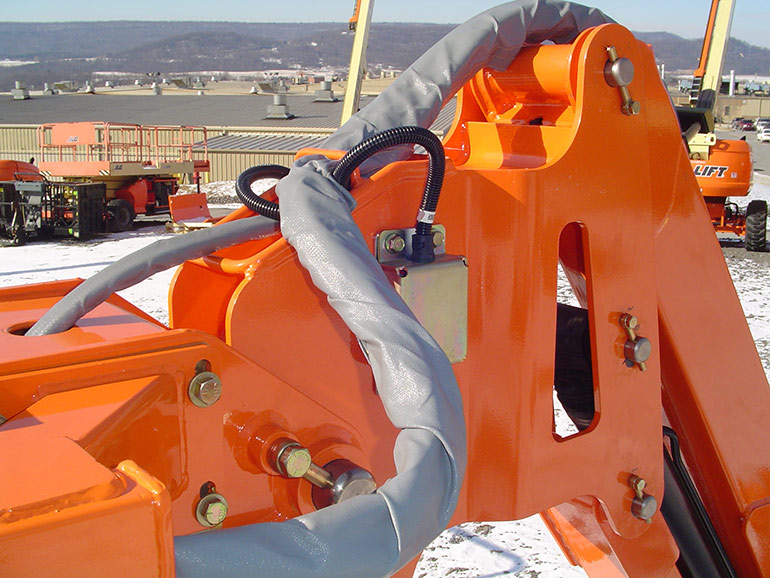By Josh Cosford, Contributing Editor
Most consider a hydraulic hose to be maintenance-free. They’re often installed and forgotten until they need replacement, hopefully not under conditions of catastrophic failure. Contrary to popular belief, hydraulic hose does not enjoy infinite service life. Like any component manufactured from metal and rubber, you may undoubtedly expect failure in the hydraulic hose’s lifetime. When and how you remove a hose is up to you, whether from failure or planned replacement.

It goes without saying that hydraulic hose must be installed in such a way as to prevent any physical strain, such as kinking or torquing. The hose should lay as naturally as possible, with no abnormal stress upon the connection or reinforcement. Hose maintenance means little if installation errors result in failure long before servicing is required. The correct hose length prevents excess length from sagging or rubbing against areas causing wear.
You must eliminate the potential for accidental causes of hose failure, of which the majority occur from physical damage or wear of the hose cover. Rigidly fixing the hose in place using clamps typically prevents the hose from rubbing against anything, but sometimes the machine requires bending as part of the machine function. Any hose with movement potential must be protected with hose wraps, which may be flat plastic coil or abrasion-resistant sleeves.
Hose sleeves offer the secondary benefit of chemical protection. A dirty environment with exposure to industrial fallout increases the breakdown rate of rubber. A sleeve is clamped the entire length of the hose from fitting to fitting, providing a sacrificial surface that prevents hose wear from both abrasion and chemicals. Inspect the hose sleeve or wrap regularly, especially in areas known to rub against the machine or other hoses, and replace the wraps if any damage fails to protect the hose itself.

Although a well-maintained hose assembly will last many years, even the most perfectly installed and maintained hose requires replacement eventually. Just like hydraulic pumps, filters and oil require periodic replacement, so too does a hose. One downside of protective sleeves is that they hide the hose itself, preventing easy inspection. Part of your preventive maintenance program should involve removing the hose wrap to inspect the outer cover of the hose beneath. If you find any apparent cracks, leaks, or abrasion, replace the hose immediately.
It helps to keep track of your hydraulic hose service life. If you know a machine seems to experience only three or four years before hoses start to fail, perhaps because of demanding conditions, then consider replacing all hoses within that window. For example, if after four years, three of the twelves hoses on your machine have prematurely failed, consider that the others are not likely to last much longer. Increase your inspection frequency to be sure other hoses are not near failure, and if your machine is critical to production, consider replacing hoses early.
Hydraulic hose assemblies should not be neglected because they’re a fraction of the replacement cost compared to pumps or actuators. A hose failure results in machine downtime just the same as a pump failure – proper hose maintenance is preventive, not reactive.
Filed Under: Fluid Power Basics, Hose & Tubing, Hose Assembly Tips